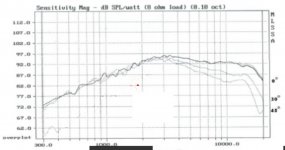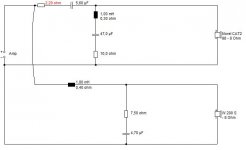Please, do you refer to this mounting solution?
View attachment 825380
Isn't it a flush mounting? I've always took for granted that this is the correct way to mount every driver..
What do you intend for same distance from 3 edges? Is that a better way to fight diffraction rather than different distance as I've made?
Thanks
Yes, That's the picture I refer to.
The tweeter baffle plate looks like it is not flush with the baffle, but a little bit too deep into the speaker. (if you put a straight edge across the speaker is there space between the edge and the tweeter baffle plate ?)
If that is the case you can place a couple of 'cereal box cardboard' gaskets behind the tweeter to bring it up flush with the speaker baffle. The cutout for the tweeter is a bit large so some sort of putty could fill the gap to smooth any discontinuities.
I meant the distance from the tweeter to each edge was quite similar to each other, concentrating the diffraction issues into a narrower frequency band. I would make the differences larger to spread out the effect. (and make the cabinet edges have much larger roundovers)
Before changing out all your plans try your tweeter in a large baffle to see if that eliminates your problems. Also try setting up the speakers for flat response outside away from walls and then place indoors. They will no longer measure flat in room but should sound a lot warmer and natural.
Cheers,
Rob.
Very good ideas Rob. There are a few diffraction modeling programs that also allow for round over. Bigger baffle should move dips and peaks lower by 1kHz or 2 depending on tweeter placement and having the tweeter a bit to one side sometimes also helps a little. Before building new box I would enlarge the baffle by gluing wings from the cardboard - make a fake box, or placing existing enclosure into cardboard box with cut out and use painters tape to smooth out the transition. Then measure if got desirable effect.
Strangely my SB 2way with ring dome tweeter sounds best with 2dB hole centered around 3.5kHz (BBC dip?), x-o being something of LR4 at 2k. I tried hard to make it flatter but it sounded unnatural and splashy. Box has 1" round over and tweeter is 3/4" off center line.
Strangely my SB 2way with ring dome tweeter sounds best with 2dB hole centered around 3.5kHz (BBC dip?), x-o being something of LR4 at 2k. I tried hard to make it flatter but it sounded unnatural and splashy. Box has 1" round over and tweeter is 3/4" off center line.
Last edited:
Yes, That's the picture I refer to.
The tweeter baffle plate looks like it is not flush with the baffle, but a little bit too deep into the speaker.
...cut...
The cutout for the tweeter is a bit large so some sort of putty could fill the gap to smooth any discontinuities.
...cut...
Tweeter is really flushed, indeed cutout is rather larger than faceplate so there's quite 1 mm of distance all around..
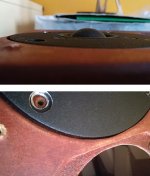
Unfortunately my wood working skills aren't perfect (it's a miracle I succeded in forming Vifa DC9 cutout..!).
However, as said I already orederd a couple of Visaton waveguide because I'm curious about this method's results, and I'm already working on a simple 2 way solution using SS D2905-9500 together with Peerless P830869, crossed as low as possible with a LR2 topology. I've seen that this woofer can be cutted easily as much as higher in frequency and simulator gives a good slope with just an inductor and a cap more a classic RC in series with inductor.
I'll begin with bare tweeter with waveguide, let's cross fingers. If working bad, I'll add a baffle around with rounded edge and so on.
If still working bad I'll try to change midrange with a more performing one, as TangBand W5-704D which seems to be crossable as high as you want, has enough sensitivity and doesn't cost too much.
Thank you!
Another question: is there a method to overlay in ARTA theoretical curves for using them as guide in fine tuning measurements?
It can be done in Boxsim simulator but in measurement software I don't know..
It can be done in Boxsim simulator but in measurement software I don't know..
Tweeter is really flushed, indeed cutout is rather larger than faceplate so there's quite 1 mm of distance all around..
View attachment 825648
Unfortunately my wood working skills aren't perfect (it's a miracle I succeded in forming Vifa DC9 cutout..!).
In that case I apologise, the original picture looked recessed to me but must be due to the shadow of the gap / angle of the camera.
Cheers,
Rob.
Another question: is there a method to overlay in ARTA theoretical curves for using them as guide in fine tuning measurements?
In ARTA, there is a target overlay option too at the frequency response window, Overlay - Generate target response.
In that case I apologise, the original picture looked recessed to me but must be due to the shadow of the gap / angle of the camera.
Cheers,
Rob.
Please don't apologise absolutely! Thank you for every precious input 🙂
In ARTA, there is a target overlay option too at the frequency response window, Overlay - Generate target response.
Well, great, I've seen right now, just I haven't understand what it means the Q factor, if you change it nothing happens for plotted curves. Am I wrong if I believe that Q factor is typical of every filter topology and it wouldn't be necessary to change if you want a typical curve?
More, for a given cross frequency, cross point dB varies by topology, choosing for example a LR4 filter cross point is @ more than -10 dB, is it possible?
Last edited:
LR type is -6dB, so is BW4. BW3, BW1 -3dB. That's for textbook flat response. But I have seen BW3 -6dB, LR4-BW4 -6dB. Then you can drop tweeter by dB and half or so, to have sloped response in x-o area. Take look into Vituix Optimizer options. One thing the newer version 2 wants off axis response as well to calculate power response, but the first two versions 1 work with On axis without generating off axis. It's a very powerful program.
Last edited:
More, for a given cross frequency, cross point dB varies by topology, choosing for example a LR4 filter cross point is @ more than -10 dB, is it possible?
LR type filters are in-phase filters, the maximum gain from 2 sound source is +6 dB if they are perfectly in phase. So LR filters are -6 dB at xo point if we want flat frequency response and good phase match.
With -10 dB xo point, if the 2 sound source is in phase, we have -4 dB at xo point compared to flat.
Last edited:
..ok.. all solved, that was me who wasn't able to use well this ARTA's feature, now it's all ok, -6 dB for LR2 and LR4, -3 dB for BW3..
This whole business of sibilance from dome tweeters has fascinated me.
I think we have made some progress with simple questions.
Certainly the disjoint between dispersion from small HF drivers and woofers has dogged our efforts for years:
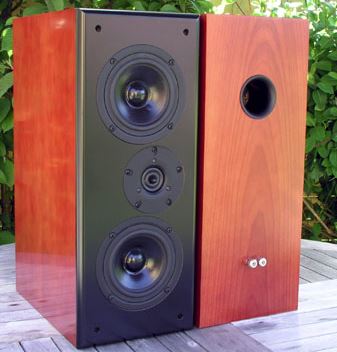
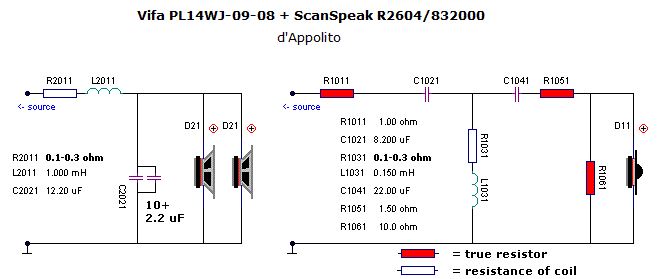
A decent Troels Gravesen design.
Better is this sort of thing, IMO. Just has more symettry, IMO. And symettry is everything in our Universe:
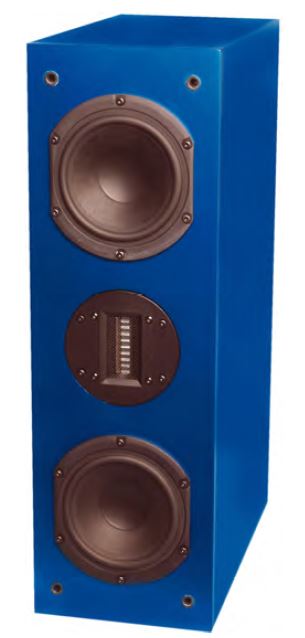
My famous cost-no-object rellie builds these sort of things into the wall with 4" of Gyproc foam around them to control diffraction. He uses sub-woofers too.
Mr. Joe D'Appolito uses BW3 too. I really don't know. But I am certainly feeling inspired for my next project. Maybe waveguide tweeters. Or Cone tweeters. Gonna be fun. 😀
I think we have made some progress with simple questions.
Certainly the disjoint between dispersion from small HF drivers and woofers has dogged our efforts for years:
A decent Troels Gravesen design.
Better is this sort of thing, IMO. Just has more symettry, IMO. And symettry is everything in our Universe:
My famous cost-no-object rellie builds these sort of things into the wall with 4" of Gyproc foam around them to control diffraction. He uses sub-woofers too.
Mr. Joe D'Appolito uses BW3 too. I really don't know. But I am certainly feeling inspired for my next project. Maybe waveguide tweeters. Or Cone tweeters. Gonna be fun. 😀
Mr. D'Appolito in Thor TL for some reasons used LR4 if my memory serves me well, possibly because the Seas Magnesium cones with their break would sound better. But Focal also used LR4 but with a bit higher Q for MTMs.
...cut...
Mr. Joe D'Appolito uses BW3 too. I really don't know. But I am certainly feeling inspired for my next project. Maybe waveguide tweeters. Or Cone tweeters. Gonna be fun. 😀
Hello Steven! If I don't go wrong, from what I've last learnt, D'Appolito configuration should unify advanteges rolloff and flat power response of BW3 with a vertical polar response without lobing coming from temporal disalignment of this topology, am I right? Of course, genial, despite the expense of a double bass driver.
This is what I still misunderstand at all... Why some famous and brand project uses a symmetrically positioned tweeter when it's almost a certainty that asymmetrical position reduces diffraction problems??...cut...
A decent Troels Gravesen design.
Better is this sort of thing, IMO. Just has more symettry, IMO. And symettry is everything in our Universe:
...cut...
Last edited:
You don't know till you build something whether it wins a cigar really. 😱
But the sort of thing I like doing always is built around an idea that I want to try.
This question of diffraction from tweeters needs addressing. You could actually go a bit off-the-wall and stick some thick carpet on the cabinet edges. Ought to do something good, just like damping on the panel
But my recent interest has been waveguide tweeters like the Morel CAT 378. Narrower dispersion, so less diffraction. I know this sound from cone tweeters. And better time-alignment.
MOREL CAT 378 Soft Dome Horn Tweeter – AmpsLab
Easy as anything IMO. Just an LCR for the Fs and a single capacitor. Michael Chua will send you a circuit for the speaker:
Finch (Morel CAT378 + Vifa PL18W0-09-08) – AmpsLab
Successful designs tend to multiply: Ergo IX 2-way DIY speaker kit | KJF Audio
What is cool about MTM in my opinion, is it gets you the same SPL with half the power to the room. So annoys the neighbours less. It sort of breaks the inverse square law tending to a more PA-like cylindrical dispersion which is less distance dependent. I never think it falls away off-axis any worse than a regular MT. And I have listened to these things.
But the sort of thing I like doing always is built around an idea that I want to try.
This question of diffraction from tweeters needs addressing. You could actually go a bit off-the-wall and stick some thick carpet on the cabinet edges. Ought to do something good, just like damping on the panel
But my recent interest has been waveguide tweeters like the Morel CAT 378. Narrower dispersion, so less diffraction. I know this sound from cone tweeters. And better time-alignment.
MOREL CAT 378 Soft Dome Horn Tweeter – AmpsLab
Easy as anything IMO. Just an LCR for the Fs and a single capacitor. Michael Chua will send you a circuit for the speaker:
Finch (Morel CAT378 + Vifa PL18W0-09-08) – AmpsLab
Successful designs tend to multiply: Ergo IX 2-way DIY speaker kit | KJF Audio
What is cool about MTM in my opinion, is it gets you the same SPL with half the power to the room. So annoys the neighbours less. It sort of breaks the inverse square law tending to a more PA-like cylindrical dispersion which is less distance dependent. I never think it falls away off-axis any worse than a regular MT. And I have listened to these things.
Last edited:
On the cat378, if you subtract the on axis response, you are 8db down 10khz vs 3khz 30 degrees off axis.
The dispersion may be like an 8" full range driver.
Think 1 pair of ears at 7', 2 people (maybe 3) at 12'.
But on axis with the 5.6uf cap, it is 6db down at 2khz, 12db down at 1khz, no kufuffle where its Fs is, and deeper than a surface dome.
So you can do 6db time alignment / phase alignment if that is what rocks your boat.
And it can take 80 watt receiver (crossed at 200hz).
The dispersion may be like an 8" full range driver.
Think 1 pair of ears at 7', 2 people (maybe 3) at 12'.
But on axis with the 5.6uf cap, it is 6db down at 2khz, 12db down at 1khz, no kufuffle where its Fs is, and deeper than a surface dome.
So you can do 6db time alignment / phase alignment if that is what rocks your boat.
And it can take 80 watt receiver (crossed at 200hz).
here is the cat378 without the 5.6uF cap.
Notice 30 degrees off axis it is 7db down from 4khz to 10hz.
Actually, it is slightly better than a 3.5" tc9 driver.
Radiation patterns of full range drivers
Notice 30 degrees off axis it is 7db down from 4khz to 10hz.
Actually, it is slightly better than a 3.5" tc9 driver.
Radiation patterns of full range drivers
Attachments
Last edited:
Just putting down a marker for our endeavors in this 50-y-o loudspeaker game... 🙂
I think this Morel CAT378 idea is about as good as anything we have come up with so far:
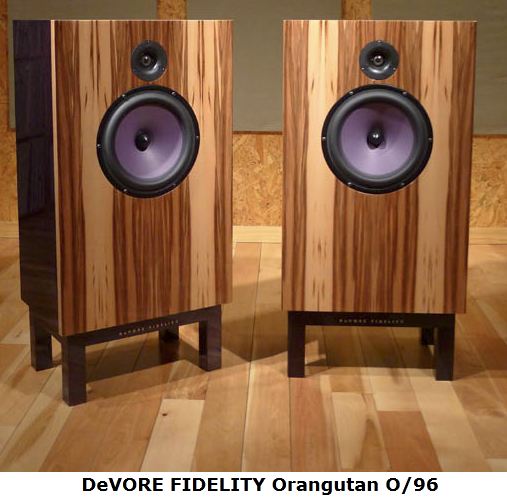
Apparently works well:
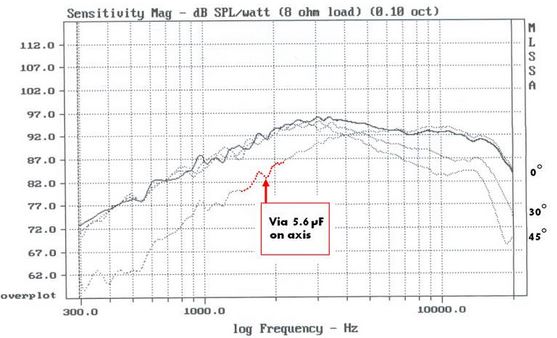
Unless you are quite advanced in impedance theory, you won't know this curve from a hole in the ground:
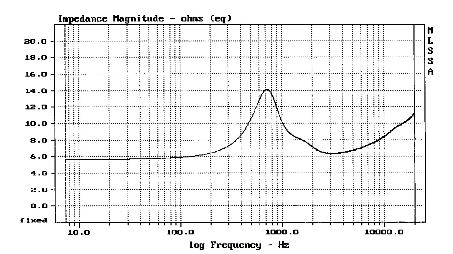
But abandon not all Faith. We can get this working. Me, I might try about 3.9uF cap here, given we are attenuating the output. Just how it works.
I think this Morel CAT378 idea is about as good as anything we have come up with so far:
Apparently works well:
Unless you are quite advanced in impedance theory, you won't know this curve from a hole in the ground:
But abandon not all Faith. We can get this working. Me, I might try about 3.9uF cap here, given we are attenuating the output. Just how it works.
Attachments
..beatiful suggestion, the usability of a 1st order filter and the price of this gear fascinates me very much, my only problem is that I've to place that D2905 somewhere, my heart cries seeing it in the closet; but for the next project I'll give Morel a chance! In the meantime, today arrived me the two Visaton waveguides : )...cut...
But my recent interest has been waveguide tweeters like the Morel CAT 378. Narrower dispersion, so less diffraction. I know this sound from cone tweeters. And better time-alignment.
...cut...
Unfortunately from here I've lost the thread.. since I can't still understand why power response is so important, maybe more important than on-axis response, I'd like very much to understand better ethese concepts. Please would you explain: does a narrower dispersion decrease power response?...cut...
What is cool about MTM in my opinion, is it gets you the same SPL with half the power to the room. So annoys the neighbours less. It sort of breaks the inverse square law tending to a more PA-like cylindrical dispersion which is less distance dependent. I never think it falls away off-axis any worse than a regular MT. And I have listened to these things.
What does it have to do waveguided tweeter's narrow dispersion with an MTM config?
- Home
- Loudspeakers
- Multi-Way
- May my problem be diffraction?
